
Mushroom mold is a persistent challenge for all mushroom growers. High survivability and rapid growth means mold can easily interfere with harvesting and destroy entire yields of functional and psychoactive mushrooms.
Fortunately, cultivators can avoid this risk with proper growth and sterilization techniques.
This guide will help mushroom growers identify, prevent, and manage mold, optimizing the chances of a successful harvest.

What is Mold?
Mold is a natural microorganism that grows almost anywhere oxygen and moisture are present. Mold is actually a type of fungi, just like mushrooms, that reproduce by distributing tiny cells called spores.
Spores can travel in the air for long periods and are highly resistant, surviving in extreme environments. These factors mean mold can effortlessly spread far and wide.
Mold and mushrooms, including the mycelium (fungal root network) they grow from, feed on organic matter. This means mold spores can easily contaminate the mushroom substrate, or the organic medium on which mycelium grows. Substrates serve as the food source and structural foundation.
As mold spreads, it uses up the substrate’s nutrients, space, and moisture, hindering the mushrooms’ ability to grow. In some instances, mold prevents mushroom substrates from producing fruiting bodies entirely.
Mold is a massive problem, an issue for both home cultivators and commercial operations.
Why Are Moldy Mushrooms a Problem?
1. Reduced harvest
Mold can significantly reduce mushroom yield. This loss especially impacts people cultivating mushrooms commercially, with financial impacts and wasted efforts.
2. Recurring contamination
Eliminating mold is challenging due to the resilient and dormant nature of spores, which can lead to recurring contamination. Airborne or tool-transmitted spores also pose a risk for cross-contamination across various cultivation environments.
3. Taste
Mold can affect mushroom flavor. Infected edible mushrooms, such as Oyster or Shiitake, can taste quite unpleasant.
4. Appearance
Contamination can cause visible discoloration on mushroom caps and stems, introducing patches of unnatural hues like green, black, or blue. Mold can even cause stunted growth patterns, leading to a deformed appearance.
5. Health risk
Eating mold on edible mushrooms can cause allergic reactions. In some cases, “mycotoxins,” toxic compounds produced by mold, can also be poisonous and make people severely sick.
Grow 1 Year's Worth of Microdoses in Just 6 Weeks
Third Wave partnered with top mycologists to create the world’s easiest and best mushroom growing program (kit, course, and expert support).
- Pre-sterilized and sealed
(ready to use out of the box) - Step-by-step video and text course
- Access to growing expert in community
- Make your first harvest in 4-6 weeks
- Average yield is 1 - 4 ounces (28-108g)
- Fits in a drawer or closet
- Enter info for Third Wave discounts:
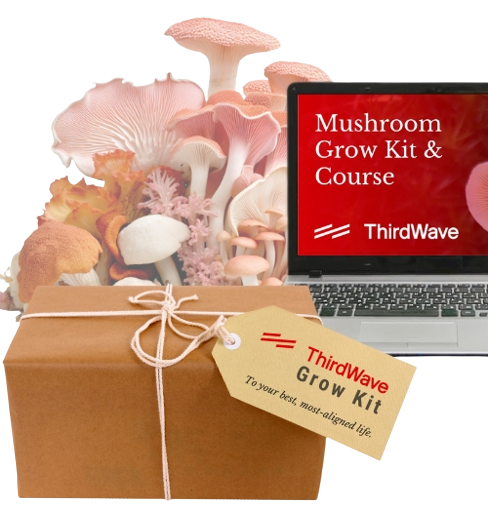
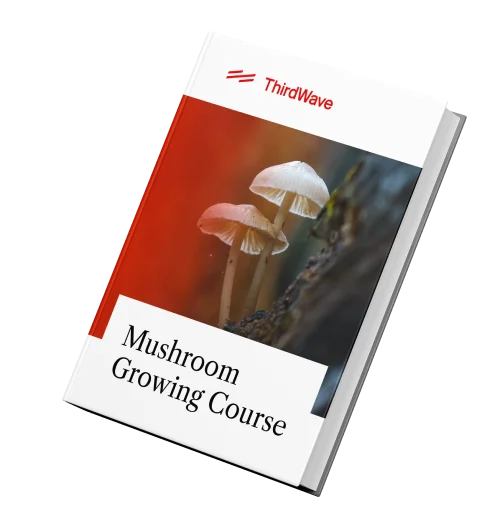
Grow 1 Year's Worth of Microdoses in Just 6 Weeks
Third Wave partnered with top mycologists to create the world’s easiest and best mushroom growing program (kit, course, and expert support).
- Pre-sterilized and sealed
(ready to use out of the box) - Step-by-step video and text course
- Access to experts in community
- Make your first harvest in 4-6 weeks
- Average yield is 1 - 4 ounces (28-108g)
- Fits in a drawer or closet
- Enter info for Third Wave discounts
7 Types of Mushroom Mold & How to Identify Them
Many different species of mold can infect mushrooms.
Here’s a list of some of the most common types and their nicknames:
1. Black Mold (Aspergillus niger)
Aspergillus niger is a type of fungi within the Aspergillus genus that causes a “black mold” disease in various plants and mushrooms. Other Aspergillus molds include Aspergillus flavus which is yellow, and Aspergillus davatus, which is green.
A. niger produces harmful mycotoxins, ochratoxin A, and patulin, which can cause severe allergic reactions when inhaled or ingested.
Inhaling Aspergillus molds can also cause Aspergillosis, a chronic respiratory condition.. In severe cases, some people require invasive surgery to remove balls of Aspergillus, called “Aspergillus sp,” which can form in the lungs.
Aspergillus niger colonies that can infect mushrooms begin as a white to yellow color and becomes black, or black-brown as spores are produced. The colonies appear fuzzy with a powdery texture. This mold can be particularly harmful to health, so growers should be particularly aware of it.
Aspergillus species are thermophilic, meaning they thrive in hot temperatures and are more likely to contaminate mycelium under these conditions.
2. Wet Spot or Sour Rot Mold (Bacillus sp.)
Bacillus, or “wet spot” is one of the most common mushroom mold infections.
Like Trichoderma, Bacillus is a rapidly growing mold and essential to spot early. Bacillus has a dull brown color, and can be identified by its slimy appearance and sour smell likened to rotting fruit.
Bacillus infections form a dull gray slime that makes the substrate appear wet, hence the name.
Wet spot mold has heat-resistant spores that can survive during pressure cooking. To neutralize them, growers must soak the substrate grains overnight, transforming the spores into a germinated mold that the pressure cooker can eradicate.
3. Blue / Green Mold (Penicillium sp.)
Penicillium, a mold commonly found on expired or improperly stored bread, undergoes a unique transformation. Initially appearing as small white colonies, it matures into a vibrant blue-green hue with a granular texture, making it easily distinguishable. Beyond its role in food spoilage, Penicillium has noteworthy characteristics that extend beyond the kitchen.
This mold’s airborne spores have the potential to settle and proliferate on various substrates, including mycelium and mushrooms in cultivation environments. The ability of Penicillium to affect mycelium and mushroom growth is a concern for growers, as it may compromise the health and yield of the cultivated fungi.
While Penicillium played a pivotal role in the discovery of the antibiotic penicillin, revolutionizing medicine, its presence on food typically signifies spoilage and potential health risks. This dual nature of Penicillium highlights its significance both as a scientific breakthrough and as an indicator of food safety concerns.
Therefore, whether encountered in the realm of medicine, cultivation or food storage, understanding and addressing the presence of Penicillium is crucial for maintaining both the quality of cultivated products and the safety of consumables.
4. Green Mold (Trichoderma sp.)
Trichoderma, commonly known as “green mold,” poses a unique challenge in identification and containment. Among the various species, Trichoderma harzianum is the most prevalent culprit for infecting mushrooms.
Recognizable by its light-gray to white mycelium, forming circular colonies, Trichoderma exhibits white, thick, fluffy growths during the early stages of infection. Once Trichoderma mold matures, green spore patches will appear. If Trichoderma infects fully fruited mushrooms, they may have dry blotches and lesions on the cap and stems.
Trichoderma is notoriously difficult to stop spreading once the mold releases its spores. It’s essential to identify, isolate, and dispose of Trichoderma contaminated substrates before the mold spreads to other mediums like grow bags or jars.
5. Pink Mold (Trichothecium roseum)
Pink mold can be identified by its pink to peach colors and flat powdery appearance. When cultivating mushrooms, vigilant inspection of the substrate or growing medium is essential. This mold presents itself as a powdery layer, characterized by its unique hues and relatively flat profile.
Apart from its visual traits, it’s crucial to be aware of the potential health hazards associated with Pink mold. Some Trichothecium species found within this mold may harbor harmful mycotoxins like Aspergillus niger, posing health risks if inadvertently ingested. Therefore, growers should exercise caution upon detecting the pinkish hues and powdery texture indicative of pink mold and take immediate steps to address the contamination.
6. Red Bread Mold (Neurospora crassa)
Red Bread Mold, scientifically identified as Neurospora crassa first appears pale orange and wispy, then develops into brighter orange, and spores are produced. The mold should be identified as soon as possible, as it can mature and take over a mushroom grow in less than 12 hours. Look out for pale orange wisps.
This mold thrives in high-humidity environments, making it crucial for growers to monitor moisture levels to prevent its proliferation.
While Red Bread Mold itself is not known to produce harmful mycotoxins, its presence can indicate unsuitable storage conditions or compromised food quality. Therefore, upon detecting the distinctive red growth and wooly texture associated with Neurospora crassa, immediate action should be taken to address the contamination.
7. Cobweb Mold (Hypomyces rosellus, Formerly Dactylium dendroides)
Hypomyces rosellus, or “cobweb mold” is a common pathogenic mildew that can appear and spread across mushrooms in a very short period.
Cobweb mold manifests as a cottony growth on a wide range of fungi. Initially appearing white, the growth undergoes a color transformation to shades of pink, rose, or red as it matures. Dark red pimple-like structures called perithecia become prominent features.
Hypomyces rosellus looks similar to mushroom mycelium at first, making it challenging to identify. However, it’s typically much duller than mycelium, with finer strands.
Hypomyces rosellus flourishes in high moisture conditions, so it’s essential to control humidity. Fortunately, this mildew is easier to eliminate than most mold species. If spotted early, hydrogen peroxide (H2O2) can generally wipe it out.
Online sources suggest small patches of cobweb mold can be removed by placing a damp paper towel over the patch and pouring salt over the towel.
iNaturalist is a great resource for identifying different molds. The website contains images of what molds look like when they infect mushrooms so that growers can use these as visual references.
Why Do Mushrooms Develop Mold?
Mushrooms may turn moldy for various reasons.
1. Contaminated substrates:
Mushroom substrates, made of organic material like wood, paper, textiles and food waste, are an ideal growth medium for mold. If substrates aren’t thoroughly pre-sterilized through high-temperature heating methods, mold can germinate, grow and infect any mycelium.
2. Contaminated cultures
Some mushroom growers use a liquid culture, a nutrient-rich solution to cultivate mycelium before transferring it to the substrate. This process can streamline the growing phase and lead to more predictable outcomes. However, cultures prepared in non-sterile conditions risk contamination.
3. High moisture environments
Mold thrives in humid climates, so moisture presence can increase the chance of growth. Improperly ventilated environments also increase moisture risk, as stagnant air can breed high humidity.
4. Warm environments
As well as humidity, mold also thrives in warm environments, with growth flourishing between 25-30°C. If the temperature of a mushroom growing set-up isn’t controlled, warm environments can also greatly increase the risk of contamination.
5. Equipment contamination
Mold spores can contaminate any piece of equipment or too used to cultivate mushrooms. If items like mason jars, grow bags, gloves or syringes aren’t thoroughly sterilized, mold spores can latch on and subsequently compromise the entire mycelial growth network.
6. Pests
Pests are unwanted organisms that can appear on mushrooms and damage the crop, such as mites, gnats, and maggots. Pests may carry mold spores and introduce them to the growing environment.
How to Prevent Mushroom Mold
Sterilization
Sterilization, according to mycologists, is the most important step in preventing mold. Sterilization is the process of eliminating all microorganisms, is crucial for preventing mold spores from contaminating the growth environment.
Mushroom growers can sterilize their equipment using an autoclave or pressure cooker. Both of these devices are sealed pots that heat water to generate steam and pressurize the chamber to increase the steam temperature. By raising temperatures to above 121°C, these tools kill microorganisms, including mold. There’s very little difference between autoclaves and pressure cookers. However, autoclaves tend to be larger, more sophisticated and often more expensive than pressure cookers
Alternatively, home harvesters might consider buying a grow kit, such as Third Wave’s Mushroom Grow Kit. This system comes with pre-sterilized equipment, saving growers time and stress.
Grow 1 Year's Worth of Microdoses in Just 6 Weeks
Third Wave partnered with top mycologists to create the world’s easiest and best mushroom growing program (kit, course, and expert support).
- Pre-sterilized and sealed
(ready to use out of the box) - Step-by-step video and text course
- Access to growing expert in community
- Make your first harvest in 4-6 weeks
- Average yield is 1 - 4 ounces (28-108g)
- Fits in a drawer or closet
- Enter info for Third Wave discounts:


Grow 1 Year's Worth of Microdoses in Just 6 Weeks
Third Wave partnered with top mycologists to create the world’s easiest and best mushroom growing program (kit, course, and expert support).
- Pre-sterilized and sealed
(ready to use out of the box) - Step-by-step video and text course
- Access to experts in community
- Make your first harvest in 4-6 weeks
- Average yield is 1 - 4 ounces (28-108g)
- Fits in a drawer or closet
- Enter info for Third Wave discounts
Disinfection, or surface sterilization, is also essential to prevent mold contamination. Mushroom growers should use disinfectants such as hydrogen peroxide or alcohol, before and after each step, wiping all objects while frequently washing hands with soap and water.
Wearing a mask, sanitized gloves and typing up hair will also reduce the risk of contaminating growing set-ups with microorganisms carried on the body.
Humidity
Mushrooms absorb water in the air through their cell walls, encouraging growth and preventing them from drying out. However, if the humidity is too high, this encourages contamination, since mold growth flourishes in moist environments. Mycology experts recommend maintaining 80-90% humidity in mushroom growing to balance these two risks.
Maintaining sufficient ventilation in your set-up is important for humidity control, as circulating air decreases the chance of moisture accumulating. You could also purchase a humidifier – a device that has a function to control and maintain humidity.
Sensors can help, ensuring humidity doesn’t exceed or dip below recommended levels and keeping the room temperature well-controlled will also prevent moisture changes. Third Wave’s Mushroom Grow Kit allows cultivators to easily maintain ideal growing environments using a pre-packed LCD hygrometer to accurately monitor humidity and temperature.
Ventilation
Ventilation is important both for humidity control and dispersal of airborne microorganisms.
For basic mushroom setups, a simple fan can be used to maintain sufficient airflow.
However, it’s important to not keep the mushroom set-up too close to fans, or any other areas of high air flow, as this increases the likelihood of infection with airborne microorganisms
Still air boxes
A still air box (SAB) is a sealed transparent box that can hold the mushroom growing environment, with arm holes on the sides for access.
SABs aren’t completely necessary for growing mushrooms. However, they provide a sterile environment for tasks such as introducing mycelium to the growth medium (inoculation) or transferring cultures. They minimize air movement, reducing the risk of airborne contaminants like mold spores or bacteria from compromising sterility.
Isolating different grows
Harvesters growing multiple batches of mushroom strains should have different setups for each to prevent cross-contamination.
Separating batches means if one setup becomes infected, the isolated crops should remain healthy and uncompromised.
How to Stop the Spread of Mold
Prevention is the best defense against mold contamination. However, if mold does occur, mitigation practices can prevent it from spreading and rescue the yield.
1. Spot it early
Growers should keep a close eye on the substrate while the mycelium is colonizing or spreading across the medium. Discoloration, dusty textures or slime are typically signs of mold, requiring immediate action.
2. Isolate the contaminated area
Once mold is identified, growers must move the infected substrate or container away from the rest of the setup. They must dispose of it immediately as far away as possible.
3. Apply anti-mold treatment
Spraying hydrogen peroxide on the infected area can eradicate mold spores and prevent them from spreading and multiplying. Specific fungicides can also serve this function.
4. Check growing conditions
Finding mold could be an indication that the temperature or humidity levels are off. Growers should check these measurements and adjust as needed.
Final Thoughts on Mushroom Mold
Growing mushrooms is a unique hobby. It’s also an inexpensive way to obtain a renewable mushroom supply for psychedelic journeys, microdosing, or culinary purposes.
Tackling mold, especially fast-growing mold, is tricky, but knowledgeable growers can prevent contamination and mitigate loss with simple strategies. By understanding the nature of mold and how it spreads, cultivators can ensure a successful harvest.
Want to learn how to grow mushrooms safely?
Grow 1 Year's Worth of Microdoses in Just 6 Weeks
Third Wave partnered with top mycologists to create the world’s easiest and best mushroom growing program (kit, course, and expert support).
- Pre-sterilized and sealed
(ready to use out of the box) - Step-by-step video and text course
- Access to growing expert in community
- Make your first harvest in 4-6 weeks
- Average yield is 1 - 4 ounces (28-108g)
- Fits in a drawer or closet
- Enter info for Third Wave discounts:


Grow 1 Year's Worth of Microdoses in Just 6 Weeks
Third Wave partnered with top mycologists to create the world’s easiest and best mushroom growing program (kit, course, and expert support).
- Pre-sterilized and sealed
(ready to use out of the box) - Step-by-step video and text course
- Access to experts in community
- Make your first harvest in 4-6 weeks
- Average yield is 1 - 4 ounces (28-108g)
- Fits in a drawer or closet
- Enter info for Third Wave discounts
With Third Wave’s Mushroom Grow Kit, home cultivators can save considerable time on pre-sterilization and worry less about contamination. Pre-sterilized equipment, disinfectant swabs, and temperature sensors mean growers can get right to work while maintaining clean, mold-free conditions.

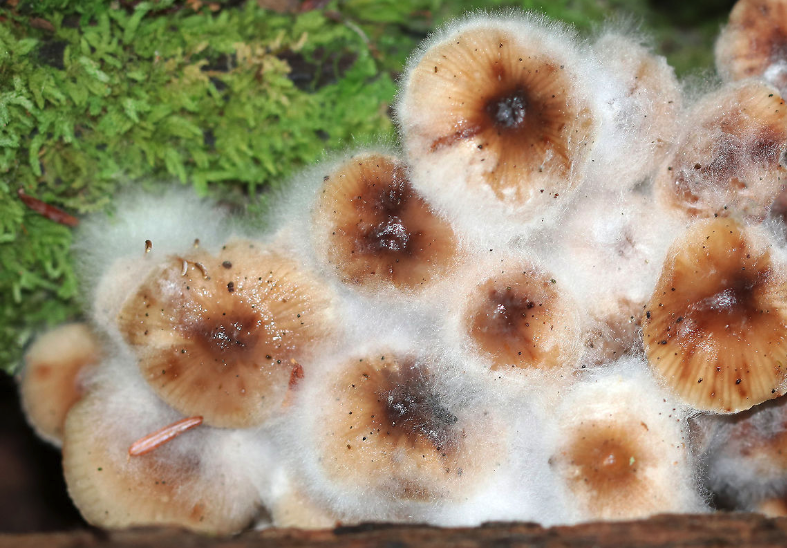
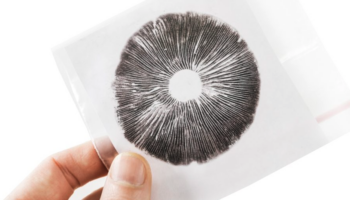

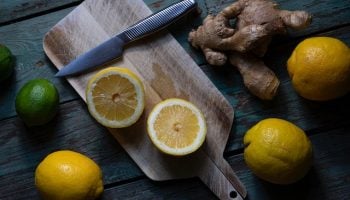



I have seen mushroom getting mold up so many time just because of bad preservation especially the fresh ones because i do not see it possible with the dehydrated ones except along the line water gets into contact with it. I enjoy how you take out the time to talk about moldy mushrooms and the various types. it is very encouraging to know there are people out there who can invest time in research to produce beautiful content along side wonderful images.
Foraging or cultivating mushrooms can be a rewarding experience, but it comes with the responsibility of ensuring the fungi you harvest or grow are free from contamination. Contaminated mushrooms can pose health risks and may compromise the desired effects, especially when dealing with edible or psychedelic varieties. Unusual Colors
One of the most apparent signs of contamination is the presence of unusual colors on the mushroom caps or stems. Look out for hues like green, blue, or black, as these are often indicators of mold or bacterial growth.